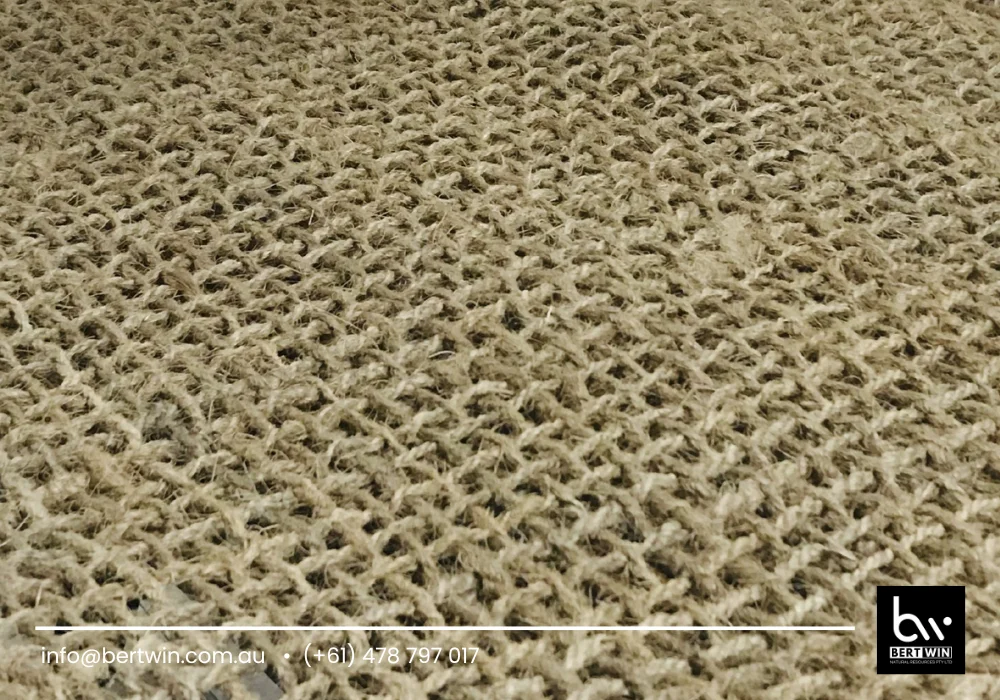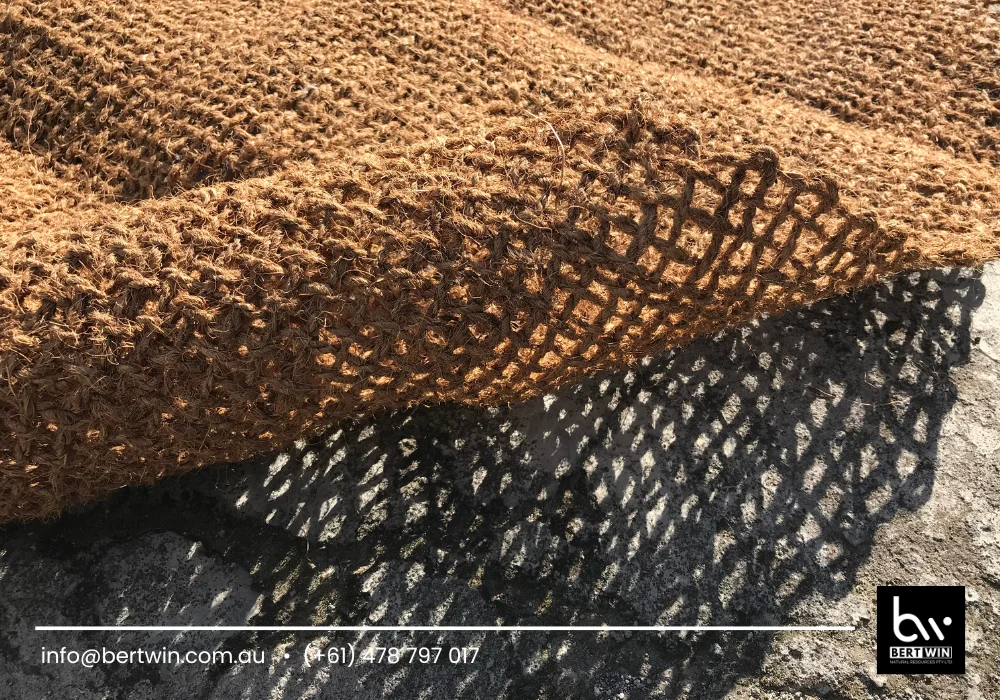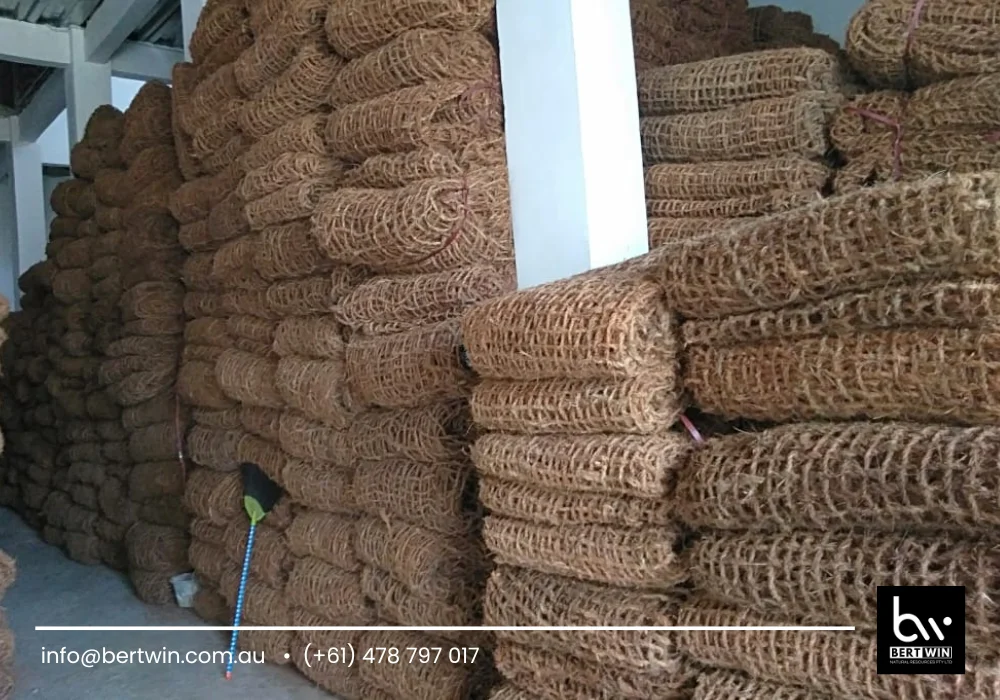Knowing how to use coco mesh effectively is essential for various applications in Australia. Coco mesh, a natural material made from coconut fibers, is becoming increasingly popular due to its eco-friendly and versatile nature. In this guide, we will explore the various ways coco mesh can be used, its applications, and the best practices for utilizing it in different settings such as erosion control, landscaping, and gardening.

What is Coco Mesh?
Coco mesh is made from the fibers of coconut husks, also known as coir. These fibers are processed and woven into a mesh material, which is often used for agricultural, landscaping, and erosion control purposes. In Australia, coco mesh is widely recognized for its sustainability and ability to provide natural solutions to environmental challenges.
Understanding how to use coco mesh requires knowledge of its different applications and how it can be adapted to various environmental conditions. In this article, we break down how to use coco mesh for several projects, ensuring that it benefits both the environment and the project itself.
How to Use Coco Mesh in Erosion Control
1. Choose the Right Type of Coco Mesh
- Purpose: Coco mesh for erosion control is designed to stabilize soil and prevent it from being washed away by heavy rainfall or strong winds.
- Application: In Australia, erosion is a common problem in coastal areas, riverbanks, and agricultural land. The best coco mesh for this purpose is typically thicker and denser to withstand environmental elements.
2. Prepare the Soil
- Step 1: Ensure that the soil is properly graded to prevent water from pooling in any specific area.
- Step 2: Remove any debris, weeds, or loose soil that could interfere with the mesh’s ability to anchor securely to the surface.
3. Install the Coco Mesh
- Step 1: Lay the coco mesh over the soil in the targeted erosion-prone areas. The mesh should cover the area evenly and extend a few inches beyond the edges of the affected area.
- Step 2: Secure the mesh to the ground using stakes or pins, making sure it is taut but not too tight. This allows the mesh to function as a protective barrier while giving room for plant roots to take hold.
4. Promote Vegetation Growth
- Step 1: Once the mesh is in place, sow native grass or plant species to ensure that they grow through the mesh. These plants will establish deep root systems that help stabilize the soil.
- Step 2: Water the area regularly to encourage the growth of vegetation, which will further enhance the mesh’s effectiveness in preventing erosion.
5. Maintain and Monitor
- Step 1: Check the mesh periodically for any signs of wear or degradation. While coco mesh is biodegradable, its lifespan can vary between 6 months to a year, depending on the environmental conditions.
- Step 2: If necessary, replace damaged sections of the mesh or add additional layers to reinforce the erosion control.
How to Use Coco Mesh in Landscaping and Gardening

1. Select Coco Mesh for Gardening
- Purpose: Coco mesh is widely used in gardening for creating vertical gardens, plant supports, and to retain moisture in garden beds.
- Application: Choose lighter-weight coco mesh if you are using it in gardening. This type is easy to handle and flexible for shaping around plants.
2. Install Vertical Gardens
- Step 1: Secure the coco mesh to a frame or wall where you want to create your vertical garden.
- Step 2: Plant climbing plants such as ivy, peas, or beans that can grow through the mesh. The mesh serves as a support structure for these plants to climb.
3. Line Garden Beds
- Step 1: Cut the coco mesh to the size of your garden beds.
- Step 2: Place the mesh along the edges or bottom of the bed to help retain moisture and prevent soil erosion.
- Step 3: Add soil and mulch over the mesh to keep it in place and promote plant growth.
4. Add Coco Mesh to Retaining Walls
- Step 1: For retaining walls, coco mesh can be placed behind the wall structure to support plant growth and prevent soil from washing away behind the wall.
- Step 2: Secure the mesh to the wall, allowing plants to grow through it and establish a stable, green barrier.
5. Water Regularly
- Step 1: Ensure that the coco mesh is watered regularly to support plant growth, particularly when it is used to retain moisture in garden beds or vertical gardens.
- Step 2: Keep an eye on the plants and coco mesh for any signs of wear, especially in harsh weather conditions.
How to Use Coco Mesh in Reforestation Projects

1. Prepare the Area
- Step 1: In reforestation projects, prepare the ground where new trees or plants will be planted. Clear the area of any weeds or competing vegetation.
- Step 2: Grade the area to ensure proper drainage and prevent water from pooling in specific spots.
2. Install the Coco Mesh
- Step 1: Lay the coco mesh over the reforestation site, covering the soil evenly. Make sure the mesh covers the planting areas and extends beyond the edges.
- Step 2: Secure the mesh with stakes or pins to keep it in place during the planting process.
3. Plant New Saplings
- Step 1: Plant saplings or tree seeds through the coco mesh. The mesh serves as a protective cover, preventing soil erosion while also helping retain moisture around the plant roots.
- Step 2: Water the saplings regularly to ensure they establish strong roots.
4. Monitor Plant Growth
- Step 1: Regularly monitor the progress of the plants. As the plants grow, the coco mesh will gradually decompose, leaving a healthy and stabilized soil environment.
- Step 2: If necessary, add new coco mesh or reinforce the area to ensure long-term success in the reforestation effort.
Conclusion
Knowing how to use coco mesh is essential for ensuring that it serves its purpose effectively in erosion control, landscaping, gardening, and reforestation projects. By following the right steps and choosing the correct type of coco mesh for each application, individuals and organizations in Australia can harness the full potential of this sustainable material. Whether you are working in a garden or on a large-scale environmental restoration project, coco mesh provides a cost-effective and eco-friendly solution that benefits both the environment and the local community.
For further information, you may contact WhatsApp at (+61) 478797017 or via email at info@bertwin.com.au.
